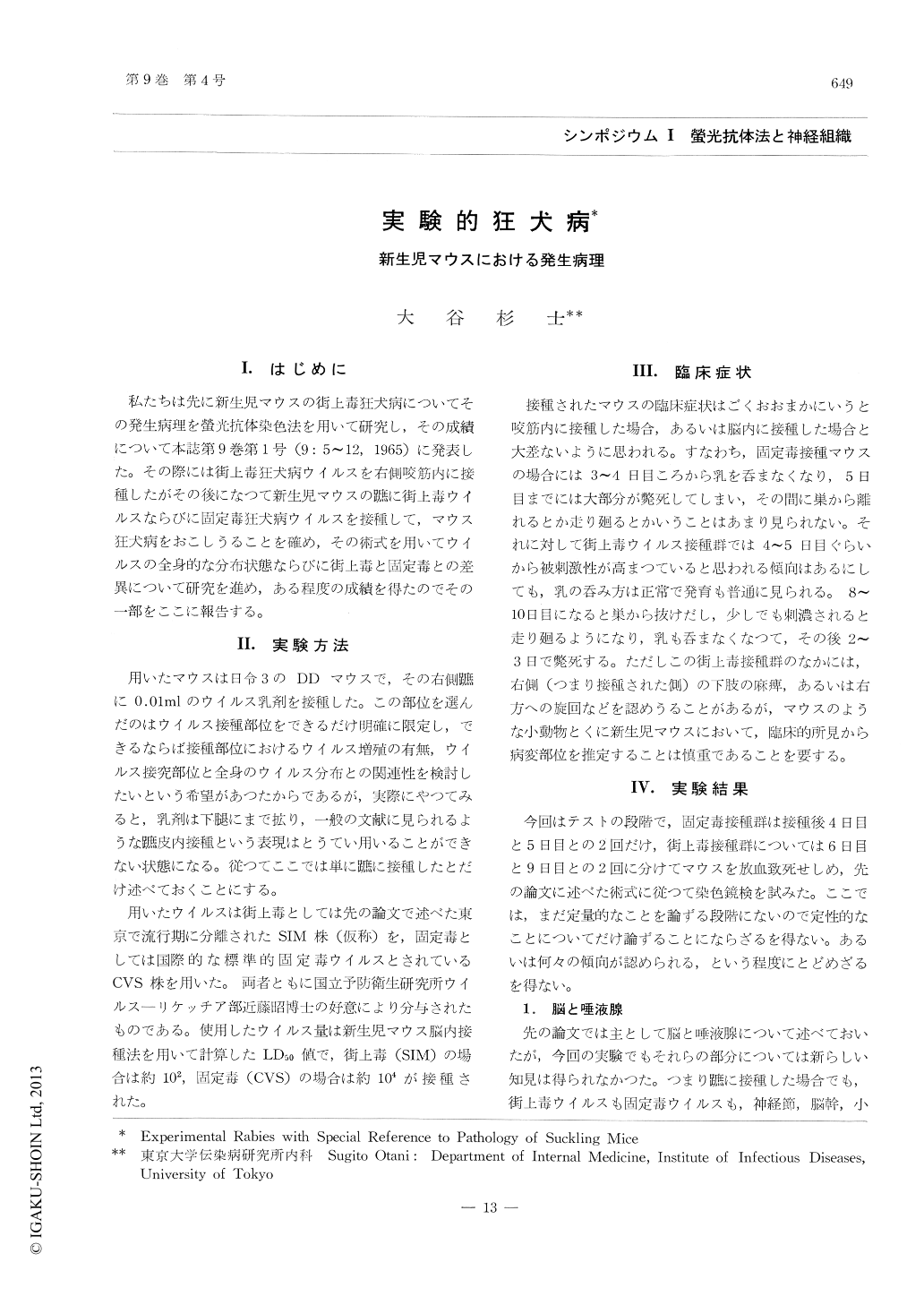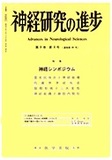Japanese
English
- 有料閲覧
- Abstract 文献概要
- 1ページ目 Look Inside
I.はじめに
私たちは先に新生児マウスの街上毒狂犬病についてその発生病理を螢光抗体染色法を用いて研究し,その成績について本誌第9巻第1号(9:5〜12,1965)に発表した。その際には街上毒狂犬病ウィルスを右側咬筋内に接種したがその後になつて新生児マウスの蹠に街上毒ウイルスならびに固定毒狂犬病ウイルスを接種して,マウス狂犬病をおこしうることを確め,その術式を用いてウイルスの全身的な分布状態ならびに街上毒と固定毒との差異について研究を進め,ある程度の成績を得たのでその一部をここに報告する。
It is no doubt that the methodology of classical histopathology has certainly contributed to an understanding of the infectious processes of rabies encephalitis by presenting various natures and distributions of neuropathologic lesions. It, how-ever, is true that these lesions are essentially of indirect tissue responses to rabies virus multiplica-tion. No informations on a direct or close rela-tionship of viral existence to those tissues responsesare available from this methodology. The spread-ing pattern of viral affection can, to some extent. be traced by acidophilic intracytoplasmic inclusion bodies or famous Negri-bodies. However, the most cells in which rabies virus synthesis occurs do not necessarily show those inclusion bodies. The trac-ing of the spreading pattern of rabies virus in the experimental animals, therefore, has an inclination to lead to the errousous conclusion. On the other hand, tissue necrosis or other responses, such as glial nodules, neuronophagias, perivascular cell cuffings etc., can only serve indirectly to speculate possible muliplication of rabies virus. Virological methods naturally make possible an exact identi-fication of existence of virus and its amount in tissues, but can give no details about a relationship of virus replication to cellular or tissue structures.
A being complementary to the disadvantages of those two methods mentioned above, the fluorescent antibody technic allows to demonstrate impressively the whole sequence of rabies virus infection at cellular, tissue or organ levels. One of the signi-ficant result thus obtained is a wide variety of cellular tropism inherent in rabies street virus which relates closely to the development and cha-racteristics of nervous and other visceal lesions.
The topographical selectivity of cerebral and other viseceral lesions in rabies encephalitis in human beings, as represented by brain stem, Am-mons horn, cerebellar cortex particularly Purkinje cells, dorsal root ganglia and salivary gland cells, care to some extent, suggested in the present animal experiments. The detailed analysis and the reasonable explanation to high vulnerability of certain organ or tissue to rabies virus remains to the future.

Copyright © 1965, Igaku-Shoin Ltd. All rights reserved.


